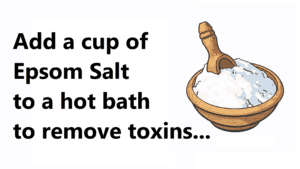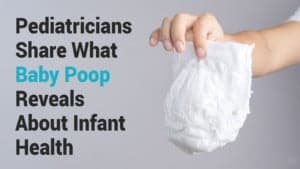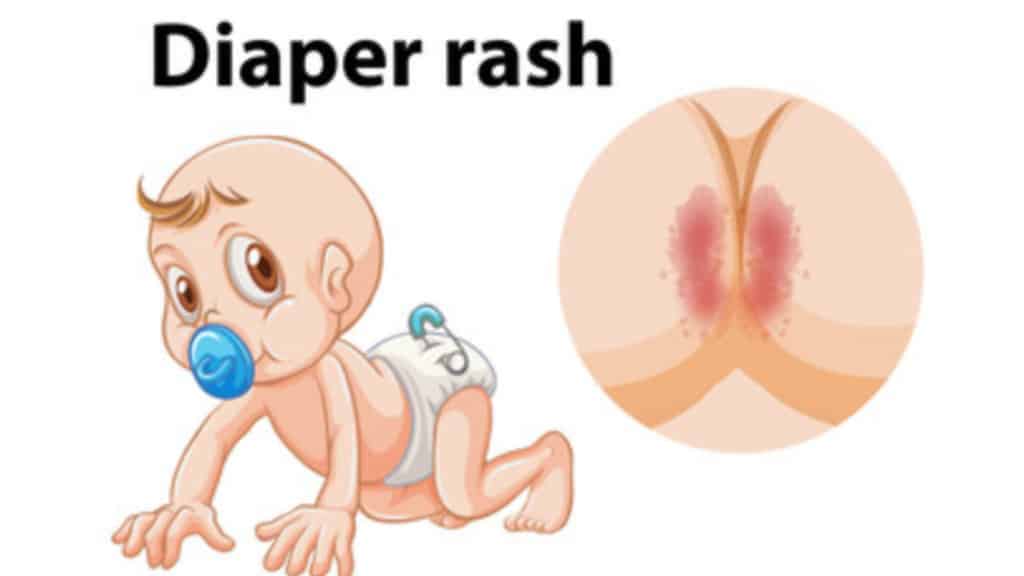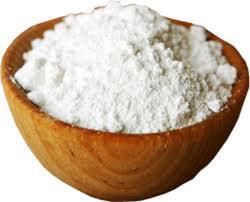Diaper rash is every parent’s nightmare. You know how much it hurts your heart to see your infant suffer any malady. And it can be challenging to know which OTC treatments to trust. So it’s a relief to discover that there are many tried and true natural remedies to bring healing to your child while allaying any fears of harmful side effects.
Diaper rash, or dermatitis, is a skin irritation that occurs when baby’s diapers remain in long-term contact with skin.
There are several reasons this rash may occur, such as:
-
- Trapped moisture from urine and feces
- Sensitive skin
- Ill-fitting diapers
- Allergic reaction, such as to a detergent or a new food
- Chafing or heat
- New skin products
- Bacterial or yeast infection
- Unhealthy pH caused by any of the above
To help prevent a painful diaper rash from developing or worsening, change diapers often and allow periods when the areas usually covered can “air out.” Use natural detergents formulated for sensitive skin, and be careful of the type of wipes you use or avoid using them as much as possible. And don’t forget to wash your own hands before and after diaper changes.
Also, introduce new foods slowly and watch for any adverse reactions. Baby’s skin can be easily affected by higher acidic levels in urine or stools, resulting in irritation. If you’re breastfeeding, this includes foods you eat that may cause pH changes in breast milk.
It may take a bit of experimenting to find the best natural solution to your baby’s diaper rash problem. Here are some of the remedies moms swear by.
15 Natural Remedies for Your Baby’s Diaper Rash
1. White Vinegar
Along with its dozens of applications around the home, using vinegar to treat both diapers and the baby’s skin can be included. Both white and apple cider vinegar have touted for their effectiveness in treating skin irritations.
Add white vinegar to your washer’s final rinse to help disinfect cloth diapers. Or add a tablespoon of apple cider vinegar to a cup of water and apply directly to affected areas with a cotton ball to create a protective barrier and restore pH balance.
2. Coconut Oil
Scientific studies confirm the universal effectiveness of coconut oil as part of a healthy skin routine. The oil’s naturally antibacterial, antifungal properties also make it an excellent remedy for skin rashes.
Apply about half a tablespoon to irritated skin. Or combine quarter-cup coconut oil and a drop of lavender essential oil for a healing balm with an extra healing punch and a pleasant aroma.

3. Cornstarch
Since the dangers of talc have come to light, many parents have come to rely on cornstarch for its moisture absorbing attributes. Some parents add cornstarch after applying other wet ointments to help create a waterproof barrier.
Simply sprinkle cornstarch on your baby’s clean, dry bottom during each diaper change until the rash is improved. A word of caution, however. Avoid allowing your baby to breathe the powder, as it can potentially inflame airways. Also, the plant origins of cornstarch may feed some yeast infections such as Candida, making the condition worse instead of better.
4. Breastmilk
Besides being superior nourishment for infants, breastmilk can also be an effective treatment for diaper dermatitis. Breastmilk contains infection-fighting agents and antibodies that can help heal the baby’s skin irritations.
Apply a few drops of breastmilk to irritated skin and let air dry. This remedy may not work on all rashes but is worth trying as the ultimate natural remedy.
5. Oatmeal
Oatmeal is another popular ingredient in a variety of home remedies. Its anti-inflammatory properties can help reduce the pain and itching associated with diaper rash.
You can use colloidal oatmeal to remove unwanted oil and contaminants and relieve skin irritation. You may try securing a tablespoon of colloidal oatmeal in a sock or old tights and putting it in baby’s bath water for a soothing soak. Use in this way once or twice a day until the rash heals.
6. Aloe Vera
Aloe vera has been a go-to natural remedy for skin injuries and disorders for hundreds of years. Studies pinpoint aloe vera’s anti-inflammatory, antibacterial, and moisturizing properties as some of the impetus for its success, along with powerful antioxidants.
Aloe vera can be obtained from the plant itself or is sold in pure form in stores. Adding one drop of lavender essential oil to 1 teaspoon aloe vera helps to enhance the healing benefits.
7. Baking Soda
Sodium bicarbonate, or baking soda, is a mild disinfectant that can neutralize bacteria and reduce acidity for a balanced pH. It reduces redness and encourages healing in affected areas.
Adding two tablespoons of baking soda to a warm bath can provide quick relief. Allow your child to soak 3-10 minutes, according to their enjoyment of the experience. Note that baking soda may sting on open sores. It is also recommended to apply a moisturizing cream afterward, as baking soda may dry out the skin.
8. Petroleum Jelly
Petroleum jelly can aid in the healing of diaper rash by forming a protective barrier against contact with urine and stools. This may be especially advantageous if your child is having an allergic reaction to new foods or cleaning products.
There is little scientific evidence for petroleum jelly as a heal-all in itself. However, it is moisturizing, so it may be useful to apply after a baking soda bath. It can also help prevent further chafing.
9. Plain Yogurt
All-natural, organic, plain yogurt containing no artificial ingredients, sugars, flavorings, or fruit, contains natural probiotic bacteria that can help fight skin infections. Plain yogurt can be used as a treatment for topical bacterial infections in adults and children.
For treating infants, apply room-temperature plain yogurt as a salve with each diaper change. Make sure the area is clean and dry before application and allow the yogurt to dry before replacing your child’s diaper.
There is little scientific evidence to support this natural remedy. However, you’ll find much anecdotal evidence of its effectiveness published across the internet.
10. Olive Oil
Here’s another one of those time-honored natural remedies for diaper rash–olive oil. Olive oil contains anti-inflammatory, antimicrobial properties that help reduce itching and skin irritation. It can also be used as a base for a healing balm with honey and beeswax.
Apply the oil directly with each diaper change. Always clean and dry affected areas before applying any treatments.
11. Browned Flour
This old-timer’s remedy for diaper rash is especially useful for heat rash and chafing during hot summer months. Although there’s not much official research on this traditional remedy at present, there are certainly plenty of believers’ success stories.
To make browned flour, cook all-purpose flour over medium heat until the color of brown sand. Let the flour cool, then store it in a container such as a salt shaker for use with each diaper change. The flour absorbs moisture away from heat rash and has a soothing, smooth texture. Browned flour is not recommended for bacterial infections or children with flour allergies.
Also, note that you should not apply this powder to infants under three months of age.
12. Epsom Salt
Epsom salt, or magnesium sulfate, is a natural disinfectant. It can also soften skin, reducing irritation. Add a half to a full cup to your baby’s warm bath and allow him or her to soak for 10 to 15 minutes. Or mix one tablespoon with a cup of water and dab on with a cotton swab with each diaper change.
It’s not recommended to allow your baby to soak in Epsom salt every day. The salt may be absorbed into the system and can have a laxative effect.

13. Chamomile Tea with Honey
This hypoallergenic flower contains antiseptic, anti-inflammatory, antibacterial, and antifungal properties. Combine the herb with the healing properties of honey, and you have a remedy for the worst of diaper rashes.
Make two cups of chamomile tea and combine them with one teaspoon honey. Allow the tea and honey mixture to cool. Then, pour the tea in a spray bottle to apply to affected areas and let dry.
14. Tea Tree Oil
The Tea Tree essential oil contains a plethora of healing properties. However, you should not apply essential oil treatments directly to the skin. Instead, add five drops of oil to 2 tablespoons coconut oil or another base to create a healing salve or ointment.
15. Homemade Creams
Recipes for diaper rash natural remedies abound, such as Tallow Balm. It may help to learn what essential oils are safe to use with children. A little research can help you determine and combine the right ingredients to address your child’s issues most effectively and quickly.
 Final Thoughts on Using Natural Remedies to Heal Your Baby’s Diaper Rash
Final Thoughts on Using Natural Remedies to Heal Your Baby’s Diaper Rash
As your baby adjusts to the world he or she lives in, their body will have many reactions to new environments and changes in diet. If your child continues to experience severe or worsening diaper rash and natural remedies don’t seem to be doing the trick, schedule an appointment with the pediatrician Or, if you are unsure if trying one of these natural remedies for diaper rash is right for you, check in with a doctor.














 Community
Community

